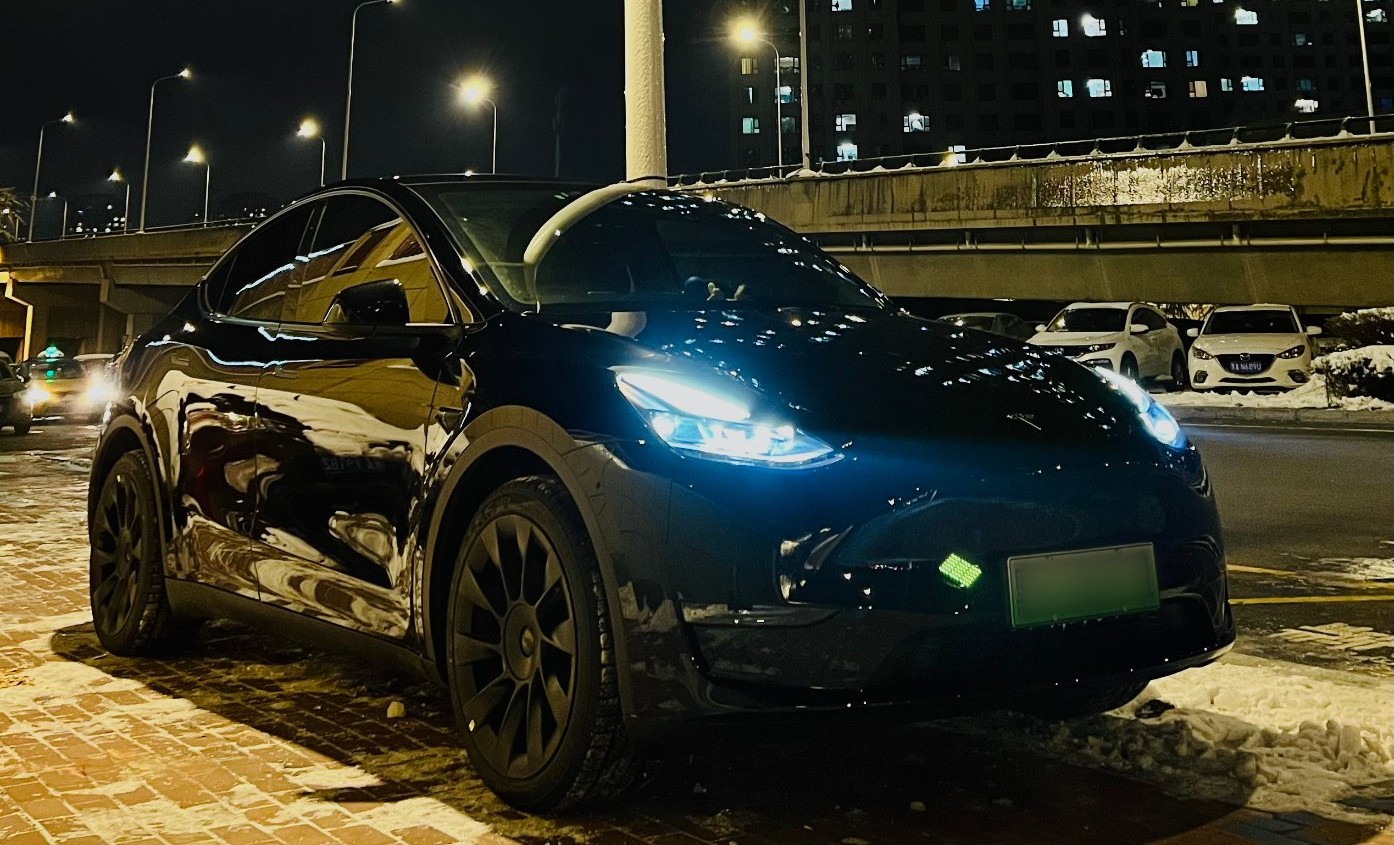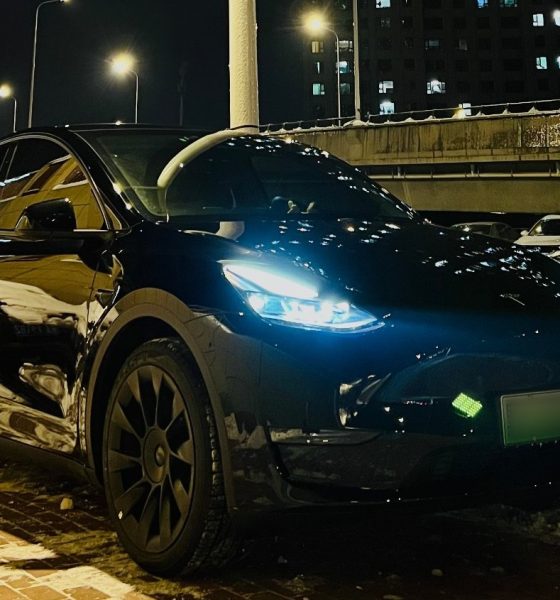

News
Tesla Model Y still China’s top premium SUV in March despite Covid headwinds
Despite Covid headwinds, the Tesla Model Y is still performing very well in China’s domestic auto market. As per data from the China Passenger Car Association (CPCA), the Tesla Model Y was the country’s top-selling premium SUV in March, selling 39,730 units during the month. This was enough to place the Model Y far ahead of its rivals in the premium SUV sector.
The Mercedes-Benz GLC, for example, is China’s second-best-selling premium SUV, but it only sold 12,748 units in March. The third-best-selling premium SUV, the BMW X3, saw 11,231 sales in the same month. This meant that the Model Y outsold both the No.2 and No.3 SUVs in China three times over in March — a month when Tesla was already experiencing the country’s renewed Covid restrictions.
With such results, it was no surprise that the Model Y was also China’s best-selling premium SUV for the first quarter. As per CPCA data, a total of 74,681 Model Ys were sold in Q1 2022, putting it far ahead of the Mercedes-Benz GLC, which sold 45,037 in the same period. The BMW X3 was in third place once more, with a total of 39,592 units sold in Q1 2022.
The Model Y would not be able to achieve its feats in China if it was not supported by a dedicated electric vehicle production facility that was ramping its numbers to a notable degree. It should be noted that the 39,730 Model Ys that were sold in China in March represents a 291.4% increase from the 10,151 that were sold in March 2021. The 74,681 Model Ys that were sold in the first quarter also represented a 354.8% increase from the 16,422 units that were sold in Q1 2021.
The Model Y’s increasing sales hint at the improving output of Gigafactory Shanghai, which is still being optimized today. Giga Shanghai is key to Tesla’s worldwide expansion, as the facility is currently playing the role of the company’s primary vehicle export hub. Unfortunately, Giga Shanghai has remained closed since the end of March due to Shanghai’s stringent Covid restrictions.
It’s not only the Model Y that is performing well in China. Its sibling, the Model 3, has also shown some resilience in the country’s domestic auto market. Tesla Model 3 sales in March were listed at 26,024 units, placing the all-electric premium sedan behind much cheaper rivals such as the SAIC-GM-Wuling’s Hongguang Mini EV, which sold 41,980 units, and the Nissan Sylphy, which sold 30,240. The Model 3 ultimately sold 33,619 units in the first quarter of 2022, which is quite understandable considering Tesla’s focus on the Model Y.
Tesla CEO Elon Musk has been very optimistic about the Model Y, noting last year that he believes that the all-electric crossover could be on track to become the world’s best-selling car. “I’d say more likely than not that in 2022 Model Y is the best-selling car or truck of any kind in the world,” Musk said, noting that the Model Y might accomplish this sometime in 2022. This timeframe could be adjusted, however, considering the Covid headwinds currently affecting China and Gigafactory Shanghai.
Don’t hesitate to contact us with news tips. Just send a message to simon@teslarati.com to give us a heads up.

News
Tesla starts showing how FSD will change lives in Europe
Local officials tested the system on narrow country roads and were impressed by FSD’s smooth, human-like driving, with some calling the service a game-changer for everyday life in areas that are far from urban centers.

Tesla has launched Europe’s first public shuttle service using Full Self-Driving (Supervised) in the rural Eifelkreis Bitburg-Prüm region of Germany, demonstrating how the technology can restore independence and mobility for people who struggle with limited transport options.
Local officials tested the system on narrow country roads and were impressed by FSD’s smooth, human-like driving, with some calling the service a game-changer for everyday life in areas that are far from urban centers.
Officials see real impact on rural residents
Arzfeld Mayor Johannes Kuhl and District Administrator Andreas Kruppert personally tested the Tesla shuttle service. This allowed them to see just how well FSD navigated winding lanes and rural roads confidently. Kruppert said, “Autonomous driving sounds like science fiction to many, but we simply see here that it works totally well in rural regions too.” Kuhl, for his part, also noted that FSD “feels like a very experienced driver.”
The pilot complements the area’s “Citizen Bus” program, which provides on-demand rides for elderly residents who can no longer drive themselves. Tesla Europe shared a video of a demonstration of the service, highlighting how FSD gives people their freedom back, even in places where public transport is not as prevalent.
What the Ministry for Economic Affairs and Transport says
Rhineland-Palatinate’s Minister Daniela Schmitt supported the project, praising the collaboration that made this “first of its kind in Europe” possible. As per the ministry, the rural rollout for the service shows FSD’s potential beyond major cities, and it delivers tangible benefits like grocery runs, doctor visits, and social connections for isolated residents.
“Reliable and flexible mobility is especially vital in rural areas. With the launch of a shuttle service using self-driving vehicles (FSD supervised) by Tesla in the Eifelkreis Bitburg-Prüm, an innovative pilot project is now getting underway that complements local community bus services. It is the first project of its kind in Europe.
“The result is a real gain for rural mobility: greater accessibility, more flexibility and tangible benefits for everyday life. A strong signal for innovation, cooperation and future-oriented mobility beyond urban centers,” the ministry wrote in a LinkedIn post.
News
Tesla China quietly posts Robotaxi-related job listing
Tesla China is currently seeking a Low Voltage Electrical Engineer to work on circuit board design for the company’s autonomous vehicles.

Tesla has posted a new job listing in Shanghai explicitly tied to its Robotaxi program, fueling speculation that the company is preparing to launch its dedicated autonomous ride-hailing service in China.
As noted in the listing, Tesla China is currently seeking a Low Voltage Electrical Engineer to work on circuit board design for the company’s autonomous vehicles.
Robotaxi-specific role
The listing, which was shared on social media platform X by industry watcher @tslaming, suggested that Tesla China is looking to fill the role urgently. The job listing itself specifically mentions that the person hired for the role will be working on the Low Voltage Hardware team, which would design the circuit boards that would serve as the nervous system of the Robotaxi.
Key tasks for the role, as indicated in the job listing, include collaboration with PCB layout, firmware, mechanical, program management, and validation teams, among other responsibilities. The role is based in Shanghai.
China Robotaxi launch
China represents a massive potential market for robotaxis, with its dense urban centers and supportive policies in select cities. Tesla has limited permission to roll out FSD in the country, though despite this, its vehicles have been hailed as among the best in the market when it comes to autonomous features. So far, at least, it appears that China supports Tesla’s FSD and Robotaxi rollout.
This was hinted at in November, when Tesla brought the Cybercab to the 8th China International Import Expo (CIIE) in Shanghai, marking the first time that the autonomous two-seater was brought to the Asia-Pacific region. The vehicle, despite not having a release date in China, received a significant amount of interest among the event’s attendees.
Elon Musk
Elon Musk and Tesla AI Director share insights after empty driver seat Robotaxi rides
The executives’ unoccupied tests hint at the rapid progress of Tesla’s unsupervised Robotaxi efforts.

Tesla CEO Elon Musk and AI Director Ashok Elluswamy celebrated Christmas Eve by sharing personal experiences with Robotaxi vehicles that had no safety monitor or occupant in the driver’s seat. Musk described the system’s “perfect driving” around Austin, while Elluswamy posted video from the back seat, calling it “an amazing experience.”
The executives’ unoccupied tests hint at the rapid progress of Tesla’s unsupervised Robotaxi efforts.
Elon and Ashok’s firsthand Robotaxi insights
Prior to Musk and the Tesla AI Director’s posts, sightings of unmanned Teslas navigating public roads were widely shared on social media. One such vehicle was spotted in Austin, Texas, which Elon Musk acknowleged by stating that “Testing is underway with no occupants in the car.”
Based on his Christmas Eve post, Musk seemed to have tested an unmanned Tesla himself. “A Tesla with no safety monitor in the car and me sitting in the passenger seat took me all around Austin on Sunday with perfect driving,” Musk wrote in his post.
Elluswamy responded with a 2-minute video showing himself in the rear of an unmanned Tesla. The video featured the vehicle’s empty front seats, as well as its smooth handling through real-world traffic. He captioned his video with the words, “It’s an amazing experience!”
Towards Unsupervised operations
During an xAI Hackathon earlier this month, Elon Musk mentioned that Tesla owed be removing Safety Monitors from its Robotaxis in Austin in just three weeks. “Unsupervised is pretty much solved at this point. So there will be Tesla Robotaxis operating in Austin with no one in them. Not even anyone in the passenger seat in about three weeks,” he said. Musk echoed similar estimates at the 2025 Annual Shareholder Meeting and the Q3 2025 earnings call.
Considering the insights that were posted Musk and Elluswamy, it does appear that Tesla is working hard towards operating its Robotaxis with no safety monitors. This is quite impressive considering that the service was launched just earlier this year.








